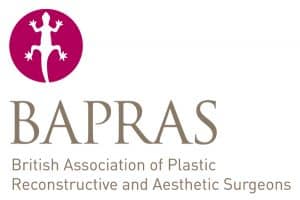
Anaesthetic
Everything to know general or local anaesthetic
25 Upper Wimpole Street
London W1G 6NF
General or Local Anaesthetic
As for anything there are advantages and disadvantages for both techniques.
However, if – as it is logical to do – we have to privilege the fundamental aspect of safety, then, based on the experience developed in time and based on the evaluation of possible risks and complications, I personally believe that general anaesthesia is the safest, most appropriate and comfortable choice for both, patient and surgeon. And this is in alignment with the opinion of the vast majority of my colleagues and all the Anaesthetists I have been working with until now.
From a surgeon’s perspective, not having to worry about the risk that the patient might be experiencing pain or having a panic attack (which could potentially happen under local anaesthesia), and knowing that the patient is fully asleep, completely unconscious and perfectly comfortable, with blood pressure, heart rate and breathing function constantly monitored by the Anaesthetist, enables him or her to concentrate on the most delicate phases of the procedure, thus allowing him or her to carry out the procedure in the most accurate and rapid way.
In the recent past, the use and abuse of local anaesthetic techniques associated with sedation has promoted the diffusion, in the field of cosmetic surgery, of this type of partial anaesthesia as opposed to General anaesthesia.
The obvious advantages of promoting this type of anaesthesia are mainly linked to the diffusion of clinic-setting surgery, that allows lower running costs for the surgical practice and higher profit for the surgeon.
The fact that plastic surgery procedures are considered minimally-invasive procedures and superficial body – procedures has generated the erroneous perception on the part of the public, that anything can be done under local anaesthesia.
The innate fear of “not waking up” from the general anaesthesia and therefore the tendency to welcome local anaesthetic procedures on the part of patients, has led to underestimate the risks of the procedure carried out under sedation only.
Over time, the news have often highlighted the dangers of undergoing surgery in inadequate/inappropriate premises where there isn’t the option/possibility of intubating the patient, in order to stabilize her/him in case of emergency.
This is why I have decided to guarantee/ensure the highest levels of safety for my patients, and therefore decided to carry out the vast majority of breast surgery procedures under general anaesthesia.
All the phases/stages
The patient has to start with complete fasting (abstinence from solid and liquid food and water) 6-8 hours prior to surgery, in order to allow the stomach to be completely empty prior to undergoing general anaesthesia.
Consultation with the Consultant Anaesthetist
Prior to receiving general anaesthetic the patient will briefly meet with the Consultant Anaesthetist, who will check again the blood test results and will ask questions regarding:
- Medical History (it is important to disclose any existing or previous medical condition/illness).
- Drugs/Medications that you’re taking
- Allergies
- Previous experience with general anaesthesia
Prior to the actual anaesthesia, a so-called pre-anaesthesia is administered in order to allow further patient relaxation and in order to dissipate the sensations of fear and tension, inevitably experienced by whoever is about to undergo general anaesthesia.
The patient is invited then to lay on the operating bed, a venflon cannula (small plastic needle) is inserted on the back of the hand, and the general aneasthesia is administered through the cannula throughout the entire duration of the procedure. Therefore the patient will be fully unaware until the procedure is completely over and until the surgeon has applied the final dressings/ bandages.
The connection to the anaesthetic machine ensures that the patient will receive the correct amount of oxygen and anaesthetic gasses. Throughout the procedure, the heart rate, blood pressure and concentration of oxygen in the blood will be scrupulously monitored by the nasethetist.
Once the dressings have been applied, the anaeshtetist discontinues the administration of the anaesthetic drugs and this allows the patient to gently wake up.
Awakening time: 30 seconds to 5 minutes after the suspension of the anaesthesia
To book a consultation call 07943 277 215 or email clinic@lindafiumara.com
Anaesthetic
Everything to know about general or local anaesthetic
General or Local Anaesthetic
As for anything there are advantages and disadvantages for both techniques.
However, if – as it is logical to do – we have to privilege the fundamental aspect of safety, then, based on the experience developed in time and based on the evaluation of possible risks and complications, I personally believe that general anaesthesia is the safest, most appropriate and comfortable choice for both, patient and surgeon. And this is in alignment with the opinion of the vast majority of my colleagues and all the Anaesthetists I have been working with until now.
From a surgeon’s perspective, not having to worry about the risk that the patient might be experiencing pain or having a panic attack (which could potentially happen under local anaesthesia), and knowing that the patient is fully asleep, completely unconscious and perfectly comfortable, with blood pressure, heart rate and breathing function constantly monitored by the Anaesthetist, enables him or her to concentrate on the most delicate phases of the procedure, thus allowing him or her to carry out the procedure in the most accurate and rapid way.
In the recent past, the use and abuse of local anaesthetic techniques associated with sedation has promoted the diffusion, in the field of cosmetic surgery, of this type of partial anaesthesia as opposed to General anaesthesia.
The obvious advantages of promoting this type of anaesthesia are mainly linked to the diffusion of clinic-setting surgery, that allows lower running costs for the surgical practice and higher profit for the surgeon.
The fact that plastic surgery procedures are considered minimally-invasive procedures and superficial body – procedures has generated the erroneous perception on the part of the public, that anything can be done under local anaesthesia.
The innate fear of “not waking up” from the general anaesthesia and therefore the tendency to welcome local anaesthetic procedures on the part of patients, has led to underestimate the risks of the procedure carried out under sedation only.
Over time, the news have often highlighted the dangers of undergoing surgery in inadequate/inappropriate premises where there isn’t the option/possibility of intubating the patient, in order to stabilize her/him in case of emergency.
This is why I have decided to guarantee/ensure the highest levels of safety for my patients, and therefore decided to carry out the vast majority of breast surgery procedures under general anaesthesia.
All the phases/stages
The patient has to start with complete fasting (abstinence from solid and liquid food and water) 6-8 hours prior to surgery, in order to allow the stomach to be completely empty prior to undergoing general anaesthesia.
Consultation with the Consultant Anaesthetist
Prior to receiving general anaesthetic the patient will briefly meet with the Consultant Anaesthetist, who will check again the blood test results and will ask questions regarding:
- Medical History (it is important to disclose any existing or previous medical condition/illness).
- Drugs/Medications that you’re taking
- Allergies
- Previous experience with general anaesthesia
Prior to the actual anaesthesia, a so-called pre-anaesthesia is administered in order to allow further patient relaxation and in order to dissipate the sensations of fear and tension, inevitably experienced by whoever is about to undergo general anaesthesia.
The patient is invited then to lay on the operating bed, a venflon cannula (small plastic needle) is inserted on the back of the hand, and the general aneasthesia is administered through the cannula throughout the entire duration of the procedure. Therefore the patient will be fully unaware until the procedure is completely over and until the surgeon has applied the final dressings/ bandages.
The connection to the anaesthetic machine ensures that the patient will receive the correct amount of oxygen and anaesthetic gasses. Throughout the procedure, the heart rate, blood pressure and concentration of oxygen in the blood will be scrupulously monitored by the nasethetist.
Once the dressings have been applied, the anaeshtetist discontinues the administration of the anaesthetic drugs and this allows the patient to gently wake up.
Awakening time: 30 seconds to 5 minutes after the suspension of the anaesthesia
As featured in The Evening Standard and The Telegraph –










Copyright © 2025 Dr Linda Fiumara MD
Website by Createch

